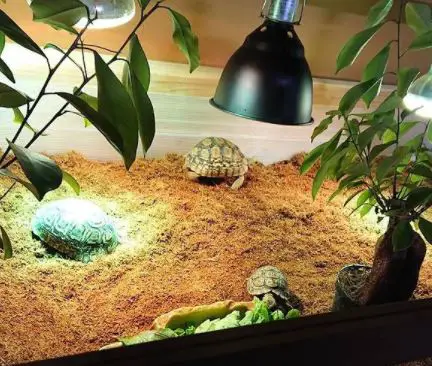
How To Decorate A Tortoise Enclosure?
Do you have a tortoise in your home?
If so, congratulations! You are well on your way to becoming an animal lover.
Tortoises are surprisingly easy pets that require very little attention.
The only downside is that they need room to roam and explore, which can be difficult if you live in a small apartment or house.
This blog post will give you some ideas for decorating their enclosure while still giving them plenty of space to move around.
Related:
How to decorate a tortoise enclosure?
There are several variables which determine how an enclosure should be decorated, so different species have to have different setups. The first variable is where the turtles come from originally. Tropical tortoises originate in very warm climates with dense vegetation and very little ground visibility (i.e., lots of undergrowth), while many North American desert species live on sparsely vegetated plains or rocky outcrops, which provide excellent visibility over long distances (i.e., much less undergrowth).
Additionally, both these two types of habitat can also occur if they cross a climatic gradient (for example the Red-footed Tortoise occurs across many habitats ranging from coastal mangroves all the way up into dry grasslands at an elevation of 5,000 feet). So these three types of habitats require different methods for providing ground cover (vegetation), and this is where most people go wrong.
After determining what type of habitat the species comes from; the next variable is how big they are likely to grow.
Juvenile tortoises need more hiding places to feel safe whereas adult tortoises tend to bask more, so they don’t use hiding places as much. Another consideration is where do you keep them?
In a house or outside in a pen? If it’s inside, temperature extremes can be a problem, but if it’s outdoors – rainfall can be very variable geographically and this could affect humidity levels. And of course, you need to know the general requirements for that species.
One thing we do often is to make our tortoise enclosures like a three-layer wedding cake (excuse my French).
The bottom and top layers are very solid and provide excellent weight distribution, but also shelter from the wind. These two layers are usually made up of rocks or paving slabs, and we use special hardcore rubble under the paving stones, as this provides great drainage which then percolates through into the next layer.
How To Decorate A Tortoise Enclosure?
Above that we put in a different type of rubble such as crushed limestone/flint with added Vitamin D3 powder; this forms a muddy base where all the tortoises can drink from by soaking it with water first – thereby making it part of the terrarium and also providing a place for them to defecate in when they do drink.
On top of this we put in some cheap plastic children’s play bark which you can buy from garden centers (we tend to use the lightest type), and on top of that, we add natural vegetation such as grasses or small bushes (which are more difficult to dig out).
This is done both for insulation, but also to provide shelter for small creatures such as insects, lizards, amphibians & invertebrates who are great contributors to the biological control side of things – meaningless pests!
The last variable is how much time you have.
If you’re not too fussed about landscaping your yard then artificial plants can look great. But do avoid plastic as some tortoises may eat them and this could lead to an impaction. Also, try not to use cacti as they may contain protective compounds which are toxic to your tortoise – so better safe than sorry.
If we had one piece of advice it would be: don’t overdo the amount of ground cover/vegetation you provide!
By this, we mean that if you want a species-appropriate habitat, then just imagine how it would appear in its native country and duplicate it as best as possible.
Too much vegetation will make your enclosure messy looking and also create humidity problems; too few hiding places will stress your tortoise by making it feel exposed (e.g., if it can’t see all around itself). When you go to the supermarket, pick up the same items that the tortoise would eat in its natural habitat (e.g., hibiscus leaves for Sulcata Tortoises) and use those as part of your landscaping plan.
How To Decorate A Tortoise Enclosure?
Tortoise accessories for vivariums
Note: This article has been written for members of The Vivarium Club in the United Kingdom. It will be most relevant to customers there, though it may also be useful to some pet keepers outside Britain.
People say that a tortoise is a small dinosaur and I am inclined to agree with them. If you wanted a pet dinosaur what else would you keep? But a living creature of such fascination needs accessorizing if it is going to live in your home.
What does this mean? Well, you can get all sorts of stuff from specialist shops or through the Internet that will improve the look and usefulness of your animal’s home, but more importantly, these things can prolong its life by preventing accidents before they occur. These can be extremely serious and can spell the end of a tortoise’s life.
I remember starting out as a tortoise keeper and taking advice from those more experienced than I was at the time, which is most definitely worth doing if you are new to the hobby.
They told me that most problems with keeping tortoises could be avoided by setting up their vivarium correctly – i.e. giving them enough space so they don’t knock over their food or water dishes, ensuring that items they might climb on do not have angles they can catch their claws on, avoiding electrical cables where possible, etc.
Simple really! All you need to start this process off is a suitably sized vivarium or hutch for your pet to live in.
A tortoise needs a place outside its vivarium to hibernate in the winter and this is called a cold box.
The most basic one that I have seen looked like a wooden shed and was built by an owner of several tortoises at her home; however, we built ours from scratch (and it took some time) and placed it inside the vivarium for extra security.
I would still recommend constructing your own cold box: you can design it so that if anything ever does go wrong with your pets, for instance, if they escape by accident when you are out of the house one day, they will be safe even though they may die from lack of food, water, etc.
Having said that, never assume they will die because you don’t see them for a few days! I know of too many cases where tortoises have survived trapped in their cold boxes with no water or food left, but none the worse for wear.
How To Decorate A Tortoise Enclosure?
The vivarium itself needs care and attention. One problem that immediately springs to mind is the use of cork bark as decoration: this looks pretty and alluring, however, chins love to sharpen their claws on it and so should be avoided.
When we first started keeping tortoises we had some old pieces of bark lying around which quickly attracted an unwelcome guest – woodlice! Nobody likes these horrid creatures and they can harm your animals if eaten by mistake (though they do eat only dead organic matter so they are not a big problem).
They also attract mites, which is another reason they should be kept at bay. If you have woodlice in your vivarium then it is most likely that you will find mites too because they feed on the same stuff. However, there can be more serious problems for tortoises from these two ‘pests’. Woodlice can carry roundworms and tapeworms which can infect tortoises if eaten by accident.
Mites carry both tapeworms and blood parasites.
Both types of parasites can make a tortoise very ill causing death – or worse! So why place cork bark inside your tortoise’s home?
On a slightly lighter note, I have heard of tortoises that have eaten their water bowls (not branded ones, of course!) and had to be taken to the vets.
The material they are made out of is bad for them for some reason; it seems too firm on the tongue causing problems when eating food after coming out of hibernation.
We were forced to make our own by using a plastic plant pot, cutting off the bottom with an old bread knife, and then inserting some mesh at the top so that it looked like the pictures you see in catalogs that sell these items.
If you do this or buy one cheaply from your local hardware store, ensure that it has not got any holes in – tarantulas can climb through extremely small spaces if they want! Some people use ceramic plant pots instead of plastic ones.
These are good for corners, but I have heard that some tortoises can break them – not a big problem, but not ideal!
How To Decorate A Tortoise Enclosure? (Cre: tortoiseforum)
Basic Size Requirements for Keeping Tortoises Indoors
Housing Galapagos Tortoises Indoor Captivity (XL Cages), An XL cage has vertical dimensions of 6 feet by 6 feet and a height of 6 to 7 feet tall that is covered on top with chicken wire or hardware cloth to prevent escape.
Such an enclosure will house two adult tortoises indoors easily and could house 4-5 juvenile tortoises.
This size habitat also offers sufficient room for the addition of safe outdoor housing during summers if desired or required due to weather conditions in your area provided you take certain precautions such as using this outdoor housing to raise hatchlings until they are 6-7″ long.
How often should you change tortoise substrate?
It is a good practice to change the substrate for your pet every few months. You can do this while the table is empty.
When you have an opportunity, you should replace any damaged lining and disinfect the table.
The best way is to remove all the debris from the table and give it a good scrubbing with a solution of warm water and mild detergent.
After this has been done, you can easily replace the lining. It is advisable to use linings that are made out of natural fibers like straw or hay or things like reptile carpeting (if it’s not full of holes).
It’s an excellent idea to make sure that your tortoise is roaming around on clean soil too.
This will go a long way in keeping his shell healthy and free of unsightly scratches. If you’re planning on using soil as substrate then you can also purchase some that come pre-treated with fungicides to prevent fungus growths, if required.
How To Decorate A Tortoise Enclosure?
Use the same substrate for your box turtle?
Box turtles need either earth or soil.
You can use peat moss, vermiculite, dirt from your yard, potting soil of any kind, etc. If you’re using dirt from your yard then it’s a good idea to be sure that there are no pesticides or fertilizers in it.
This can be done by mixing some water with the dirt and testing it with an inexpensive paper strip or putting a few drops on top of agar in a cupcake container (which is what my professor does). If they do not test positive for poisons then they are ok to use.
Again when they get dirty you’ll want to replace them but this will depend on how often you let your turtle walk around on them, etc.
So you’re saying that the substrate doesn’t need to be changed at all while it’s being used?
No.
You’ll want to replace it when it starts looking messy or every few months.
If you use newspapers then you’ll want to mix in some new ones every month or so (they tend to break down and get nasty) and of course, if they get damaged you’ll also want to replace those too.
How often to clean tortoise enclosure?
This is a great question and one that does not have a clear easy answer.
I’m sure most will agree, so let’s break this down into why we need to clean and how we go about it.
How To Decorate A Tortoise Enclosure? (Cre: allturtles)
I always say cleaning enclosures is the second biggest part of keeping tortoises – feeding correctly being first obviously! When thinking about enclosure cleaning you can look at it from two different angles: micro and macro.
Micro means the inside of the tank whereas macro relates to outside areas such as rock walls etc.
There are some areas that may be considered both but for ease, I’ll keep them separate here.
We will start with an overview of the reasons why we need to clean and look deeper at each topic later.
By micro, I mean the inside of our tanks that are housing tortoises. At first glance it may seem simple – keep the substrate clean and replace your water bowl when needed.
If you’re housing a single one for this aspect, then things are easy but many of us have multiple tortoises in an enclosure which means different substrates for each enclosure.
For example, if I have 3 male sulcatas I would use sand as it offers them a better grip to climb around their enclosures.
But if I housed 1 male with several females who are likely to breed I’d need grass-type substrate so they can see where they are digging burrows into!
If you only have one or two animals then stick to what works best for them, but if you have a mixed enclosure I’d suggest using something that is easy to clean.
Sand would be my top choice as it can get wet and then easily sieved out afterward. The only real downside with sand is the weight of keeping multiple kgs of it in your garage/shed!
How to clean tortoise poop?
You are the proud owner of a lovely tortoise.
But how to clean tortoise poop?
If you have not thought about it yet, this article will give you some great tips on how to make sure your pet is properly taken care of and how to clean tortoise poop.
If you don’t take good care of your pet’s environment, debris and excrements might accumulate in its home and harm your animal!
And cleaning them is easy; most tortoises actually like taking a bath every once in a while (Especially baby tortoises!) You can also get them used to have their cages cleaned if you start when they are young.
To clean your tortoise’s cage you need:
- – A little bowl of warm water;
- – A large bowl;
- – Paper towels;
- – Your tortoise! (duh!)
To begin, take the bowl with warm water and put it inside the tortoise’s house.
Then gently lift your pet and put it in its bathtub with some nice rocks to keep it from drowning.
There is no need for soap or cleaning solution, just water will do fine. Gently lower him into his bathtub so he stays there while you replace the paper towels in his house with fresh ones during step three.
Now pick up your tortoise, tip over his bathtub until your tortoise is standing in it and the dirty water has emptied out.
Put your pet back in his home and remove the dirty bowl from its house. In a large bowl, mix warm water with a few drops of bleach (don’t go overboard here!), make sure you have cleaned your hands very well before touching anything inside your tortoise’s house again during this step!
Tip-over your tortoise’s bathtub to make the water drain and use paper towels to clean the outside of the tub thoroughly.
If you notice that there’s any dirt on your animal, just gently wipe it away with a moist cloth or paper towel; don’t scrub too much as you could damage its shell!
Now that everything is clean, but all of your used paper towels and your bleach water mixture in a plastic bag and throw it away before opening the windows for a few minutes to air the room. Then you’re done!
How To Decorate A Tortoise Enclosure?
Tortoise safe disinfectant
Marine biologist Dr. Richard Emslie works to unravel the mysteries of sea turtle reproduction, but he’s also found time to think about something much smaller.
He’s discovered that the larvae of “water fleas” called daphnias can be killed by wide-spectrum antibacterial chemicals used in common household cleaners, such as those containing triclosan.
We need some daphnias because they are food for shellfish and other animals. And without them, coastal ecosystems might suffer or become unstable.
So Richard is asking people across Australia to help him do simple tests with common cleaners (with no soap) which contain the chemical triclosan at concentrations like those you might find in your bathroom.
Richard is a member of a national “rapid response team” called SEARCH (Species Ecological Assessment Research Team), designed to spot small problems that could be linked to serious long-term damage being caused by pollution. And Richard is taking part in the National Census of Marine Life, where he’s been surveying sea turtles and their habitats around Australia.
Richard says people can help by gathering some household products – with no soap or detergents – with triclosan as an active ingredient and taking them into the lab for testing.
How To Decorate A Tortoise Enclosure?
Conclusion
With a little bit of research, you can give your tortoise the best living conditions possible. Tortoises are solitary animals and should be housed alone.
The enclosure should also have enough space for them to move around as they please without feeling cramped or confined.
A good rule of thumb is that the bigger the animal, the larger their enclosure needs to be – so enclosures need to provide at least 1 square foot per inch of shell length (a 6-inch long turtle would require an enclosure with about 3 ft2).
Remember that turtles burrow into soil and sand when they feel threatened, so it’s important not to use any substrate in this type of habitat unless it’s completely dry or has low moisture content.
Further Reading:

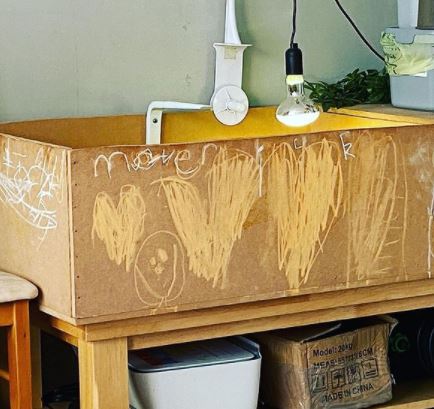
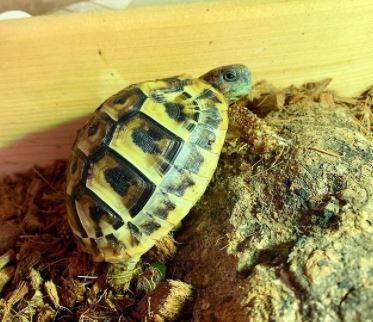
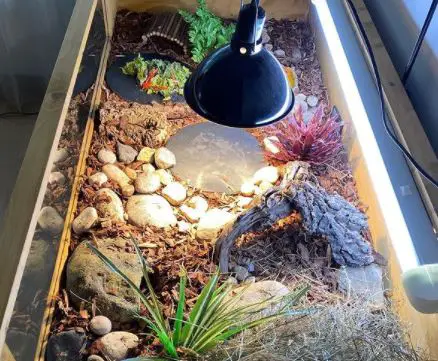
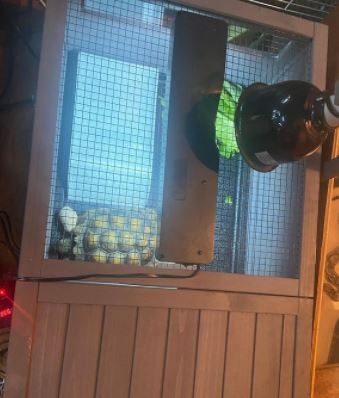
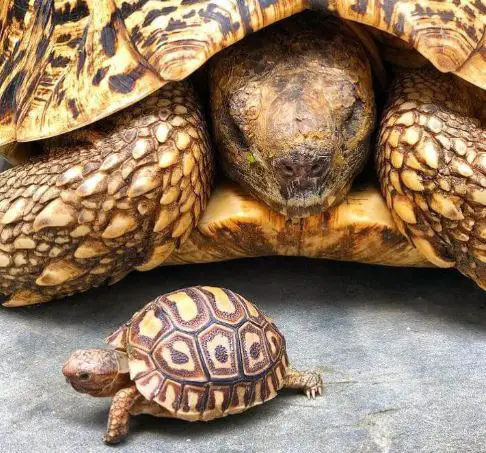
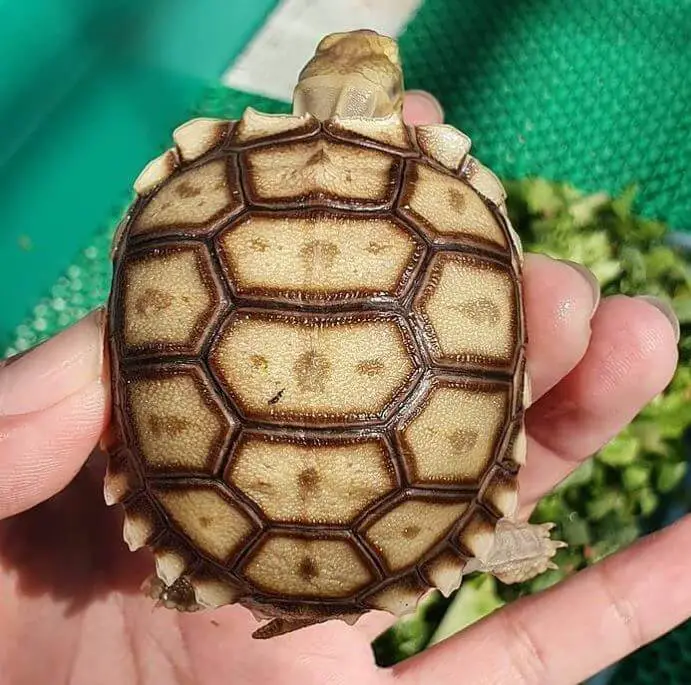
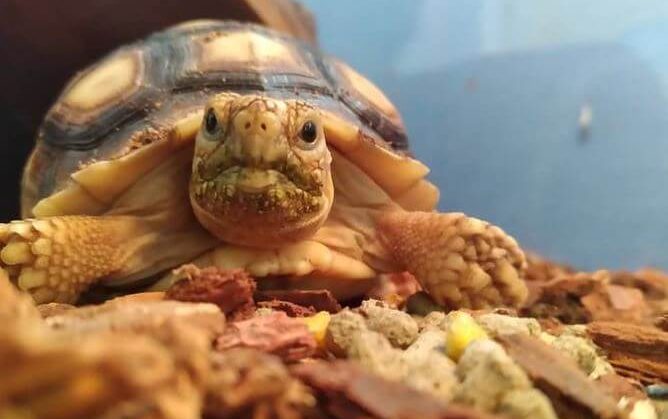

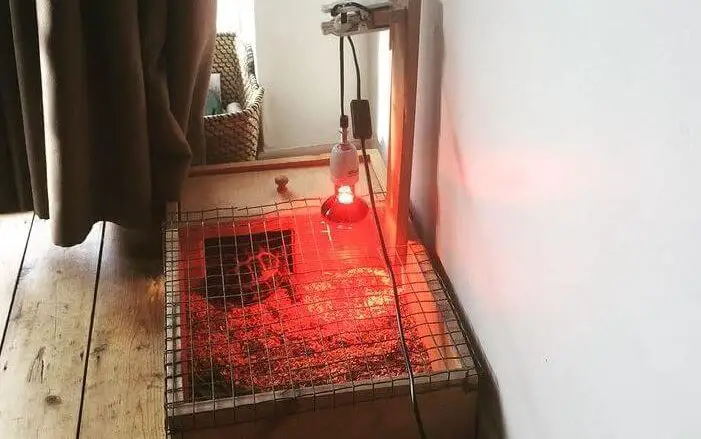

Leave a Reply